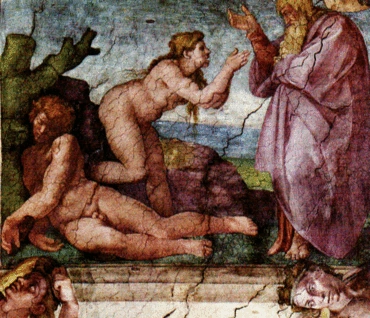Explanation of Genesis 2:22
Napsal(a) Brian David

The Lord is life itself. We are recipients of life. We give life unique forms because of our unique shapes as receptacles, and through free will we can choose how fully we will receive life. But we don't have life of our own. It follows from this that the more we turn toward the Lord and receive life, the more alive we will be; and the more we turn away the more dead we will be. It also follows that believing life is our own – with all the loves, the thoughts and the power that entails – is actually the antithesis of life.
This is the state of those in the deepest hells, who reject everything of the Lord, even His existence, and claim all life as their own. They are, in fact, only alive because the Lord forces life on them in the amount necessary to sustain existence.
This is, in a sense, what is represented by the rib – which is human, and is alive, but only in the most limited way. When the people of the Most Ancient Church (Adam) wanted to lead themselves and sense life as their own, the Lord had to use that most dead aspect of them to grant their wish. He had to use that bone, which represents our most hellish potential, what we would be if we were to reject the Lord completely.
But then the Lord did something miraculous. He turned that bone into living flesh, into a new person: the woman Eve. This represents that the Lord built that most dead, most hellish aspect of us up into something which felt life as its own, but could acknowledge that life actually came from the Lord, and could thus again be a recipient of life. It wasn't quite as pure as before; people could no longer commune directly with the Lord. But they had what they wanted instead: a sense of self.
The Writings call this – both the rib and the woman – by the Latin word proprium, essentially meaning "as of self." The rib represents the proprium on its own, which is hellish. The woman represents the proprium given life by the Lord.
(Odkazy: Arcana Coelestia 151, 152, 153, 154, 155)
Arcana Coelestia # 113
113. Nothing is more common in the Word than for the good that belongs to wisdom or else to love to be meant and represented by 'gold'. All the gold of the Ark, the Temple, the golden table, 1 the lampstands, the vessels, and on Aaron's vestments, meant and represented good that belongs to wisdom or else to love. Similarly in the Prophets, as in Ezekiel,
In your wisdom and in your intelligence have made wealth for yourself, and you have made gold and silver in your treasures. Ezekiel 28:4.
Here it is plainly stated that gold and silver, or good and truth, are the products of wisdom and intelligence, for 'silver' here means truth, as also does the silver of the Tabernacle 2 and the Temple. In Isaiah,
A multitude of camels will cover you, dromedaries of Midian and Ephah, all those from Sheba will come. They will bring gold and frankincense, and will proclaim the praises of Jehovah. Isaiah 60:6.
So too the wise men from the east who came to Jesus after His birth,
And they fell down and worshipped Him, and they opened their treasures, and offered Him gifts - gold, frankincense, and myrrh. Matthew 2:1, 11.
Here also 'gold' means good, 'frankincense and myrrh' those things that are pleasing, because they derive from love and faith, and are consequently called 'the praises of Jehovah'. 'Gold' is for the same reason mentioned in David,
He will live, and He will give to him from the gold of Sheba, and will pray for him continually, and bless him every day. Psalms 72:15.
Poznámky pod čarou:
1. i.e. the table of Shewbread, or the table for the Bread of the Presence
2. The latin here means the Ark but Swedenborg is clearly referring to the Tabernacle.






